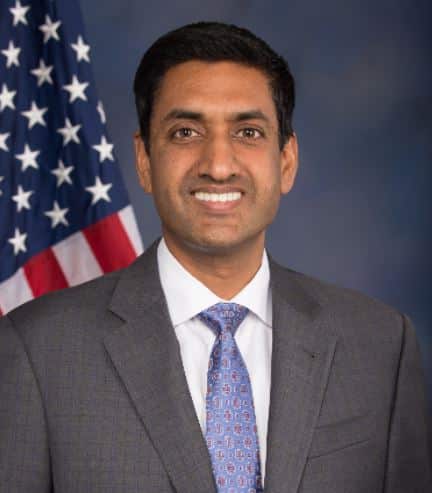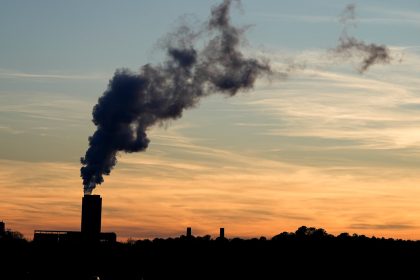Environmentalists Urge Action by Congress as Global Warming Intensifies Forest Fires

WASHINGTON — A congressional panel revived disputes Wednesday over how to manage forests to avoid catastrophic wildfires weeks before springtime brings risks of devastation for more communities in western states.
Environmentalists and lawmakers agreed good science should lead policy decisions but had difficulty agreeing on which strategies suggested in scientific studies are the best.
Some advocated for controlled burning and cutting of trees to reduce the amount of wood that could fuel wildfires. Others said leave the forests alone on the theory nature knows best how to care for itself.
Regardless of management strategies, global warming is giving wildfires an urgency that can no longer be downplayed.
Unless environmental policies change, “We will have 57% more wildfires by the end of this century,” said Rep. Ro Khanna, D-Calif., chairman of the House Oversight and Reform Subcommittee on Environment, citing a recent United Nations environmental report on global warming.
Last year’s Dixie Fire that ravaged five California counties served as an example during the congressional hearing of what no one wanted to happen again but everyone expected. The past five years have been some of the worst for wildfires in U.S. history.
The Dixie Fire caused at least $1.15 billion in damage while burning nearly 1 million acres of forests between July 13, 2021, and Oct. 25, 2021. It also killed a firefighter.
Other wildfires were more deadly, such as the 2018 Camp Fire in California. It destroyed nearly 19,000 homes and killed at least 85 people.
“The climate crisis and misguided forestry policies have given rise to catastrophic burning across our western forests,” said Khanna.
Solutions are complicated by lobbying and influence-peddling from the forestry industry, which seeks to continue cutting trees even when logging could dry out forests and make fires more intense, he said.
“They spend millions of dollars annually on advertising,” Khanna said.
Removing trees also reduces forests’ ability to absorb atmospheric carbon that contributes to global warming.
A countermeasure pending in Congress is the Northern Rockies Ecosystem Protection Act, H.R. 1755.
It would set aside 23 million acres of federal land in Idaho, Montana, Oregon, Washington and Wyoming as wilderness that could not be developed by industry without special permits from Congress. It also would direct the U.S. Department of the Interior to develop ways to encourage biodiversity within the protected wildlands.
“The climate crisis has never been more dire,” said Rep. Carolyn Maloney, D-N.Y., who introduced the bill.
Without prompt environmental action, rather than fire seasons being concentrated in the summer, “All seasons will be fire seasons,” Maloney said.
The Biden administration proposes a similar strategy called the 30 by 30 plan. A week after Joe Biden became president, he signed an executive order announcing his commitment to protect 30% of U.S. land and water from development — over 720 million acres — by 2030.
So far, Biden’s plan exists only as a proposal that has not won approval from Congress. Lawmakers have identified environmental provisions of the president’s Build Back Better Act as a potential source for any funding the 30 by 30 program might need.
Some Republicans on the environment subcommittee warned against extremist policies that could hurt consumers and the U.S. economy.
Rep. Ralph Norman, R-S.C., said banning oil and gas leases on federal lands could lead to dependence on foreign oil imports, such as from hostile Middle Eastern countries and from Russia while it is engaged in a war with Ukraine.
He also said the forestry industry could help avoid wildfires if the logging takes into account environmental considerations.
“Science clearly shows that active forest management is the best way to prevent wildfires,” Norman said.
He called suggestions from U.S. Transportation Secretary Pete Buttigieg unrealistic when he said more Americans should switch to electric vehicles. Norman cited figures showing the average cost of an electric vehicle is $55,000 while the average U.S. household income is $67,000 a year.
“He’s disconnected from reality,” Norman said.
Witnesses at the hearing largely seconded points of view expressed by the lawmakers.
Randy Moore, chief of the U.S. Forest Service, recommended removing the underbrush and dense forest growth that can fuel wildfires.
“Our thinning and burning treatment works,” Moore said.
Dominick A. DellaSala, a scientist for the California-based nonprofit Earth Island Institute, warned against allowing forestry companies that are seeking profits to have too much influence over environmental policy.
Tom can be reached at [email protected]























